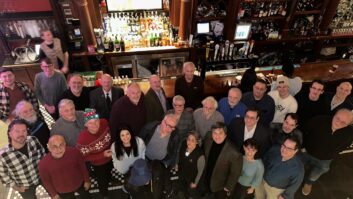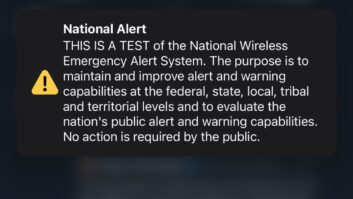What questions are stations asking about the scheduled June 15 regional IPAWS EAS test that will affect California, Colorado, Idaho, Montana, Oregon, North Dakota, South Dakota, Washington and Wyoming?
Al Kenyon is IPAWS national test technical lead for the IPAWS program office within FEMA. He has been conducting a series of webinars about the test; the final webinar is set for next Tuesday June 7.
Radio World culled the answers below from the webinars:
Q: Will the new FCC test reporting system be used by stations involved? How can stations access it?
Kenyon has said in the webinars that the FCC would be reaching out to selected volunteers, mostly in Washington state. This is being coordinated through Clay Freinwald, the Washington SECC chair.
Q: Where can interested readers access non-technical info about this test?
FEMA is making the initial portion of its series of technical webinars more accessible to non-technical folk. Kenyon encourages interested parties to join and just click off when they get to the step-by-step device configuration. The final webinar is scheduled for Tuesday June 7.
You can also view the earlier non-tech webinar, though note that it picks up in the WebEx presentation partway through.
Q: One reader notes that the test is taking place during tornado season in parts of the test area. How does FEMA navigate around such seasonal problems in scheduling something like this?
Kenyon said during a webinar that FEMA allows an “inject window” for input from the National Weather Service and state emergency managers immediately prior to the test. If there is an ongoing or potential situation that will call for an EAS activation, it can de-select that state at the last minute.
Q: What was learned in the previous regional tests that will be applied to this one?
FEMA has strengthened the notification process attached to its cancellation policy; Kenyon said it is working to ensure that its industry partners are aware of the cancellation policy [read PDF]. “I am also being more specific regarding how to avoid some of the more common operator configuration errors,” he said.
Q: What else should interested stations know?
The most common question at this point is, “Do I have to forward the regional test message immediately?” Kenyon has emphasized that the test is intended to be completely voluntary unless an SECC chooses to use it as a substitute for a scheduled RMT. (This is not recommended, although it has been done once or twice.) That means that there are no hard and fast rules; only recommendations.
“We recommend that stations participating in the test forward the message very shortly, if not immediately upon receipt,” Kenyon said. “This is particularly important for stations that are monitored by others in state plans that have that sort of arrangement.” Yes, for this voluntary test a station may hold the message for the next break in programming. Reminder: This option will not be available after the new FCC rules regarding NPT event code messages go into effect on July 30.
The main purpose of testing at this point is to allow engineers to observe how their equipment processes NPT event code messages. For radio this is relatively simple, even in stations with multiple digital subs. Television is a bit more complicated, and cable is another world of complications; in many systems downstream equipment that must respond to the NPT event code includes thousands of set-top boxes.
Q: Are plans on track for the next nationwide EAS test on Wednesday, Sept. 28?
Yes. FEMA filed an official Letter of Intent to proceed with a nationwide test with the commission, via the FCC comment system, just prior to the NAB Show. That letter was referenced in the commission’s implementation notice about the new EAS Test Reporting System.
Related:
There’s a Lot Happening in the World of EAS (March 2016)











